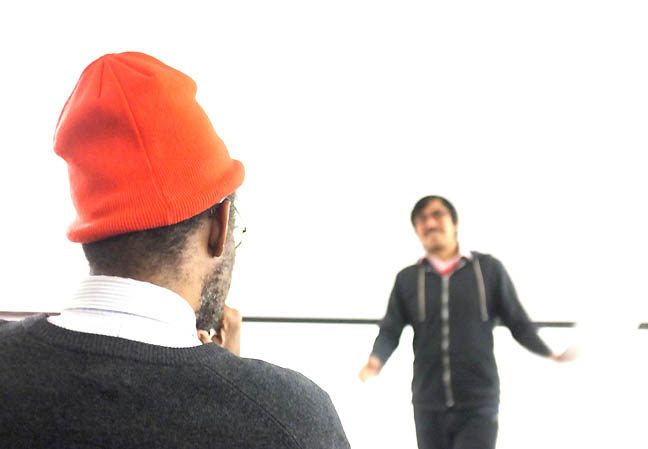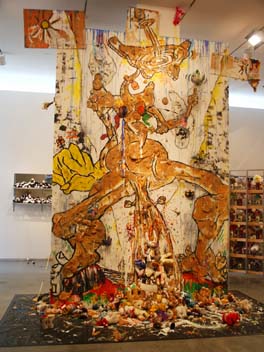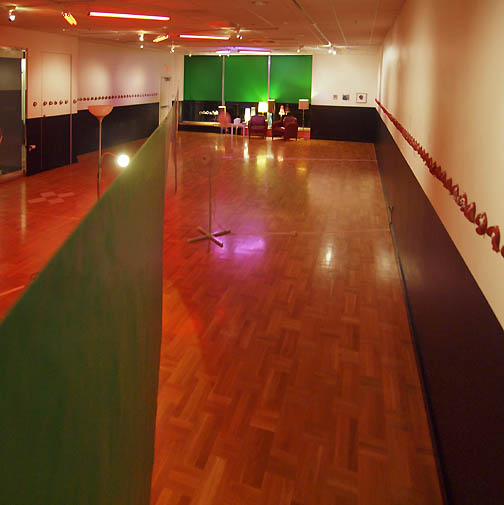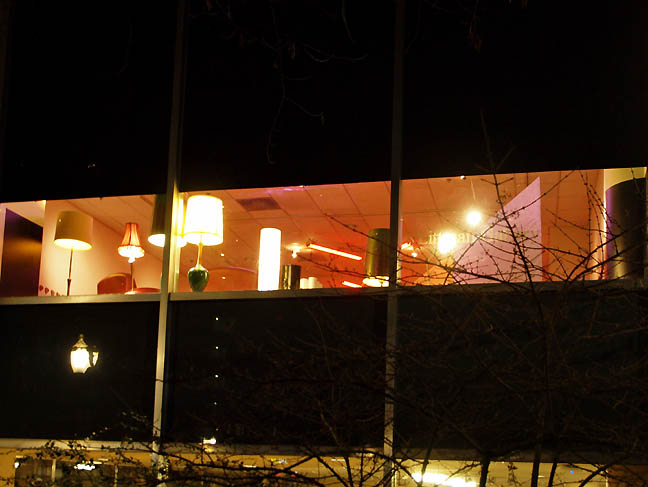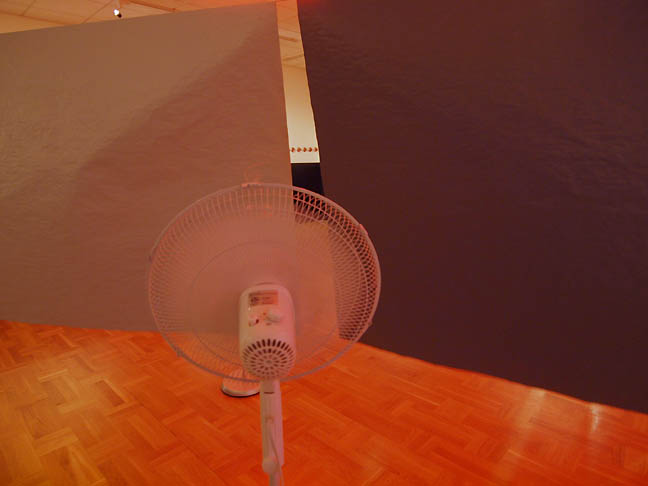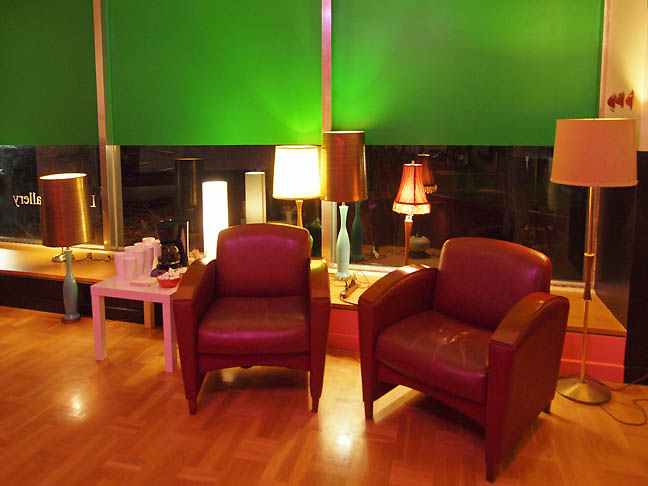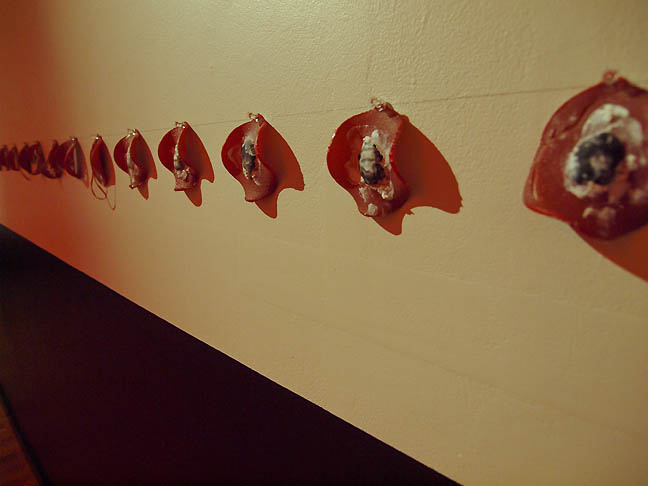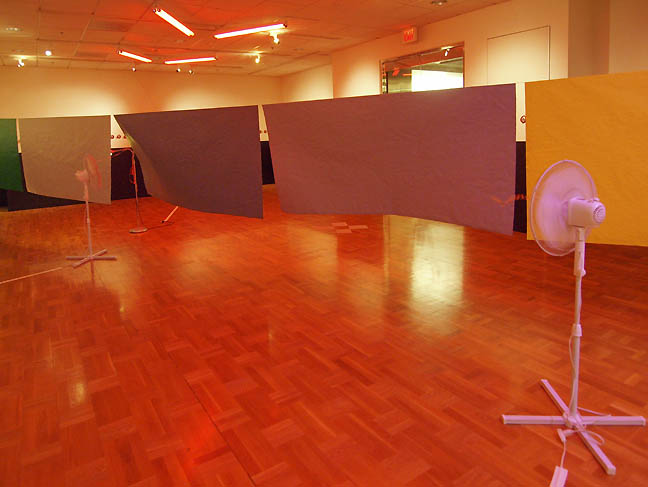
|
||
|
Portland art blog + news + exhibition reviews + galleries + contemporary northwest art
|
||
Interview with William Pope. L
Gary Wiseman: Why did you choose to revisit Portland in 2014? For some reason the timing feels significant. William Pope.L: I think returns, like endings, are always significant in some way and my return to Portland is particularly pleasurable.
GW: A rigorous research is central to your process. Please talk about your research tactics and the role statistics plays in the development of your work. WPL: There has been significant emphases placed on the idea of research by artists since probably the 1960's as if art requires justification by annexing its work with scientistic practices. I dont research so much as stumble—my use of statistics are as containers with which to fill with yet other containers---that is how I typically use them because statistics do not describe the real, they describe a fantasy, a very dressed up fantasy.
GW: What did you discover in your preparatory research for Claim that you didn't include in the exhibition space? I was led to believe that you were researching the history of racism in Portland generally. Is that the case? WPL: The reason I created Claim was to get outside my own ethnicity, yes, as if being black is an ethnicity but why not? An aside: I recently created a version of Claim, minus a few aspects, @ the ICA in Philadelphia. In the ICA's description of the work, on their website, etc they somehow always found a way to leave out the fact that the number of slices of baloney was derived from the number of Jewish people living in the city.
GW: In your lecture at PSU you briefly mentioned that your ideas about surface were informed by reading Jewish mysticism. Please discuss these ideas further. To what ideas were you referring and where can they be found? How did encountering these ideas change your prior thoughts about surface? WPL: Most of my direct reading was from the Kabbalah, however, the more practical reading was in texts on experimental lit dealing with James Joyce's Finnegan's Wake or the work of Arno Schmidt. Both writer-s wanted to physicalize the experience of reading yet at the same time disperse it via playfulness, resistance, pleasure and a sense of the old traditions renewed. The surface of the page, for both Joyce and Schmidt, is where this carnivale is acted out/performed. The surface of the page/text is more than simply a left-to-right experience, its corporeality, its flesh has value. I am interested in this for several reasons. One is that words have no heft outside of their use, their body. Another is I am interested in how writing can function as event and duration.
WPL: I like that: awkwardness has a value. Did I say that? I wonder what I meant. Fascinating. I do indeed remember talking about weak hinges, and the idea of hinges, creaky hinges being a fave. I am attracted to the space where two or more ideas come together and the fit between the ideas are clumsy or rickety or mis-matched which does not mean the fit doesn't work, it surely works, it just works across a difficulty and maybe that is more interesting. GW: How do you navigate cultural notions of failure and success? What is your personal protocol for assessing such things? WPL: Measuring success in art is possible. It's a matter of setting parameters, no? I take each project as it comes. At the same time different projects have different uses, serve different audiences. Some projects, or parts of projects, are more for the receiver or audience than for me. Sometimes I do a project because I feel my practice needs a boost or a kick in a certain direction. Some projects are successful in their notoriety but you cannot pay your bills with fame. It may seem backward these days or even capitalist to pose the question of success for an artwork but it seems to me still a good 'rough' idea, maybe because it comes off as lame, or the wrong thing to ask but in fact, it causes a productive discomfort so we should definitely ask it. Again and again and again! Hey!!!
GW: At least on the surface, the subject matter of Claim seems to be the number of Jewish women per capita in Portland. Did your interest in Jewish mysticism lead you to this metaphor? WPL: A correction is due here: Claim is not concerned with Jewish women at all. Nor really with Jewish people when you get right down to it. Rather, the piece is interested in counting, our desire to create realities with numbers. The number: 235 is a prime but my interest is not mathematical nor mystical (though that would be an interesting sub-interest), the number 235 is simply .5% of all Jewish persons living in the city of Portland. GW: Even in a place like Portland that is so tragically oblivious to its own bigotry both past and present, printing the statistical analog of Jewish female ethnicity onto slices of pork seems like a particularly precarious move. Were you counting on our apathy? WPL: I wasn't depending on anything specifically but instead used the number 235 as a hole or a hull (as in the hull of a walnut or a ship) or a set of possible things/entities. I was setting out a raft as it were not knowing on what beach it would run aground. American society is not consistent on how it plays out its dysfunction, be it racial, familial, scientistic, national or global. And I wanted to fill this hole: called the number of Jewish people living in Portland, Oregon as of 2014, with a very open set: for example, all those persons we photographed on the streets of Portland on X number of days most who were probably not Jewish, specifically seeking out persons of color to enrich the mix. As Former Secretary of Defense Donald Rumsfeld once said, "We, all of us, we are Jewish."
GW: Did you consider the fact of Mark Rothko's immigration to and early life in Portland in the development of this exhibition? Are you aware that the Jewish neighborhood Rothko grew up in was demolished to make way for a freeway system designed by Robert Mosses? GW: The notion of art's ability to transform the world and the self through performance (the masquerade) has been around for a long time but not, perhaps, as long as has been imagined. In 1915 German Jewish art critic Carl Einstein published Negerplastik. This event is widely recognized as a founding act of African art history and significant to the development of European modernism and the Avant-garde. In the 2013 article, "Looking for Africa in Carl Einstein's Negerplastik" Z.S. Strother asserts that Einstein developed his influential ideas about African art, modernism, and transformative experience in art not from actual contemporary scholarship on the African objects he presented in his book but from a mixed bag of increasingly problematic psychological and formalistic sources about the "primitive" or "archaic" mind. Assuming that we have indeed been operating-even in part-under the influence of falsified historical presuppositions regarding art as a transformational site, in your opinion, what implications does this have for art today? Specifically, performance that positions itself in a transformative "shamanistic" lineage? WPL: Your question begins in one way and ends in another. Curious. The valuing of transformation as a way of life is said to be very American. I am not so sure, perhaps we are the first to construct it as a product but as you indicated, ritual has been with humans far longer. So perhaps another question is, regardless of transformation's being commercialized, has ritual been emptied as a site for change? No, I do not think so. Look at anorexia. Look at ethnic cleansing. Look at hoarding and the Tea Party. Disparate terms but substitutive in similar sentences.
GW: What seems different about Portland since your last visit in 2003? WPL: Its cleaner. Which troubles and excites me. GW: After attending your lecture and briefly meeting you afterwards, I was struck by 1.) Your lack of pretense 2.) Your seamless confidence, and 3.) Your unexpectedly high level of availability. What I mean by availability is presence. In the minute or two of interaction we had–in the midst of a highly distracting environment-you gave me the impression that I was the sole focus of your rather penetrating attention. It was an unexpected and slightly unnerving experience. Later, I realized that the quality of this brief interaction can be found throughout your work and the primary reason I am drawn to it. What is the origin of that presence and availability? Is it a well honed character or performance? WP: It's my diet. GW: What does "L" stand for? WP: My former master's nom de plume: Lancaster. Of which my Mom's Mom held so tightly. GW: I have never been able to figure out why you wore a skateboard on your back during The Great White Way performances. Why? WPL: To go faster. Posted by Gary Wiseman on March 15, 2014 at 10:12 | Comments (0) Comments Post a comment Thanks for signing in, . Now you can comment. (sign out)
(If you haven't left a comment here before, you may need to be approved by
the site owner before your comment will appear. Until then, it won't appear
on the entry. Thanks for waiting.)
|
| s p o n s o r s |
 |
 |
 |
 |
 |
 |
 |
 |
 |
 |
 |
 |
 |
 |
 |
 |

|
Site Design: Jennifer Armbrust | • | Site Development: Philippe Blanc & Katherine Bovee | |


